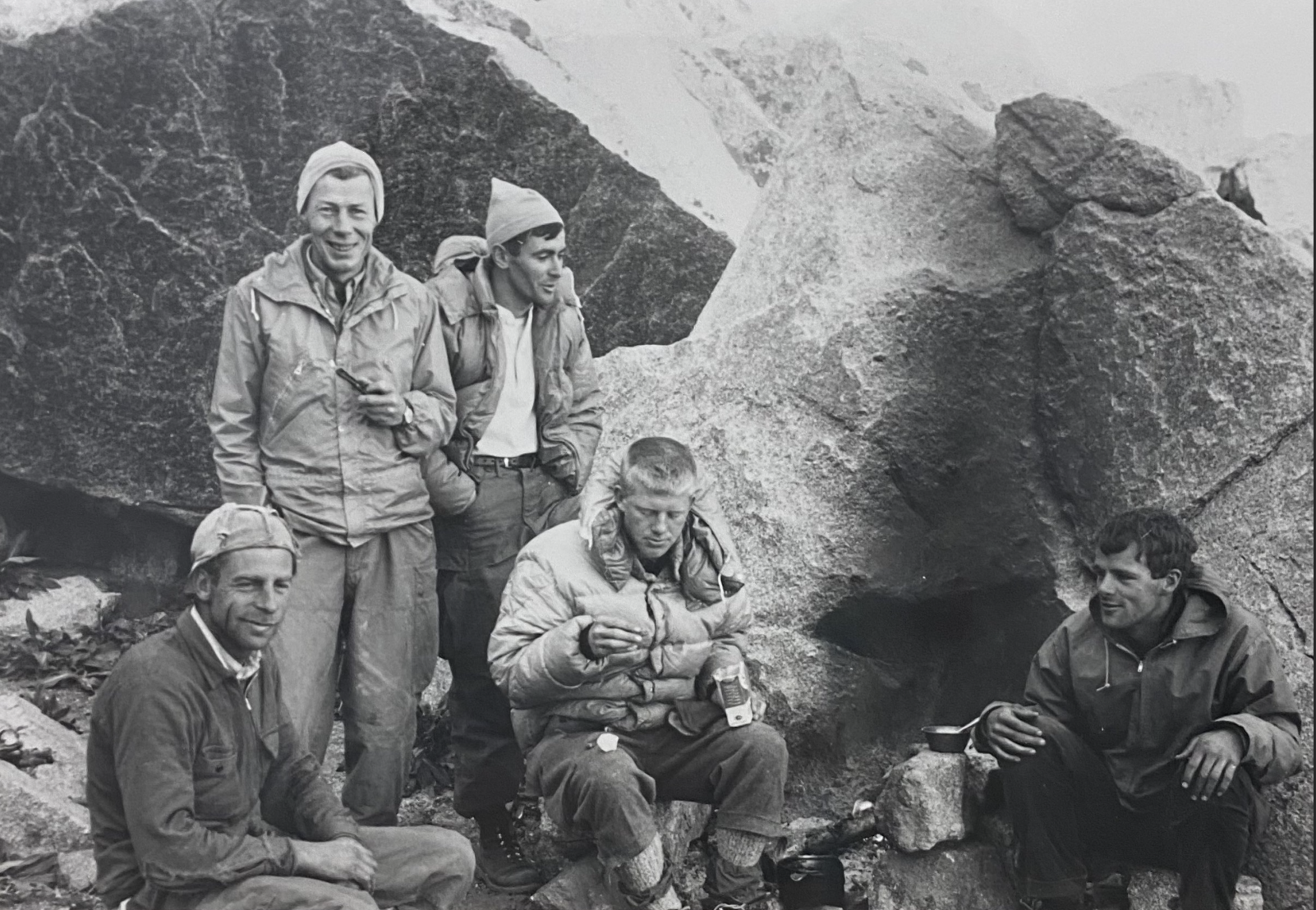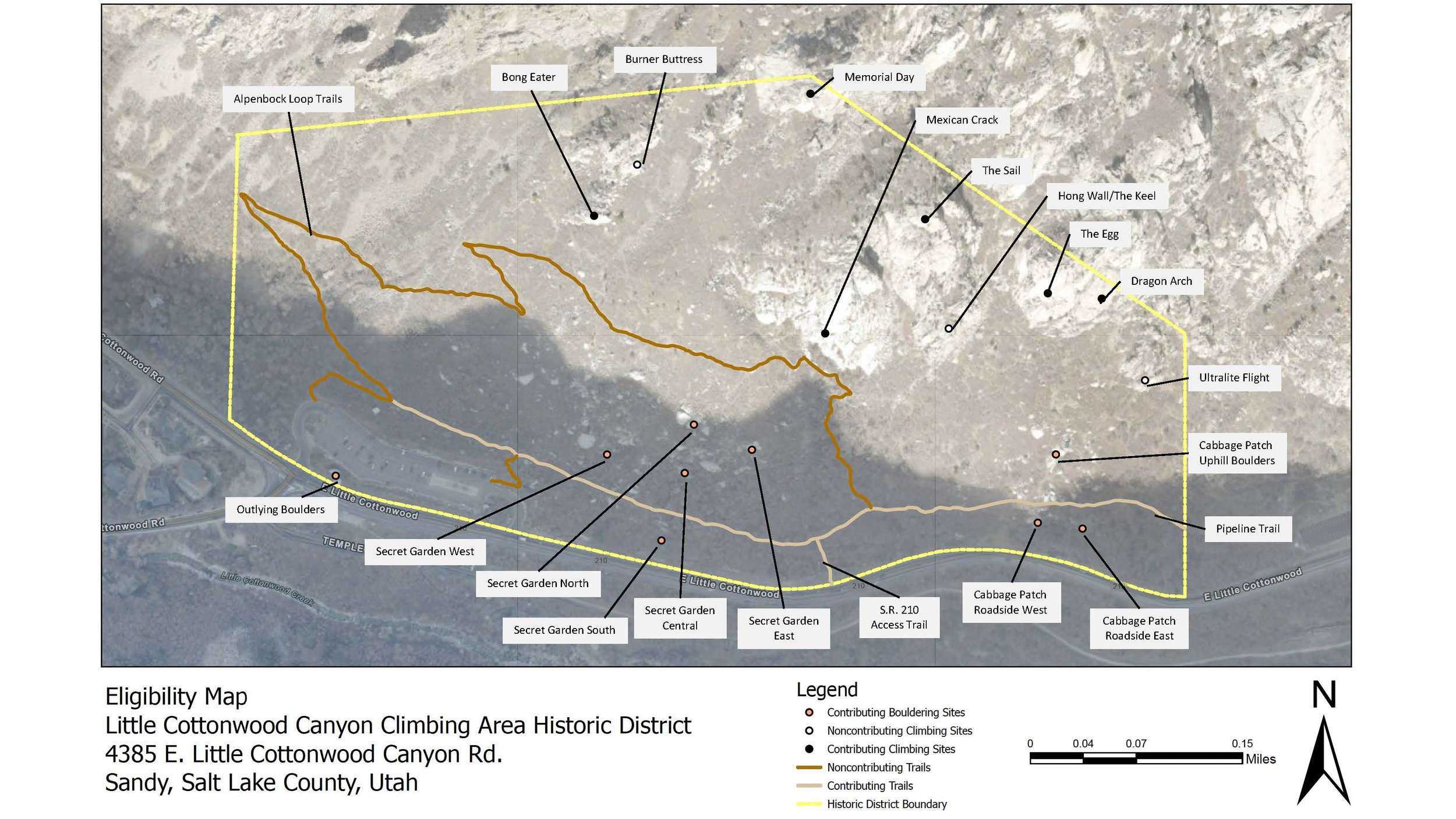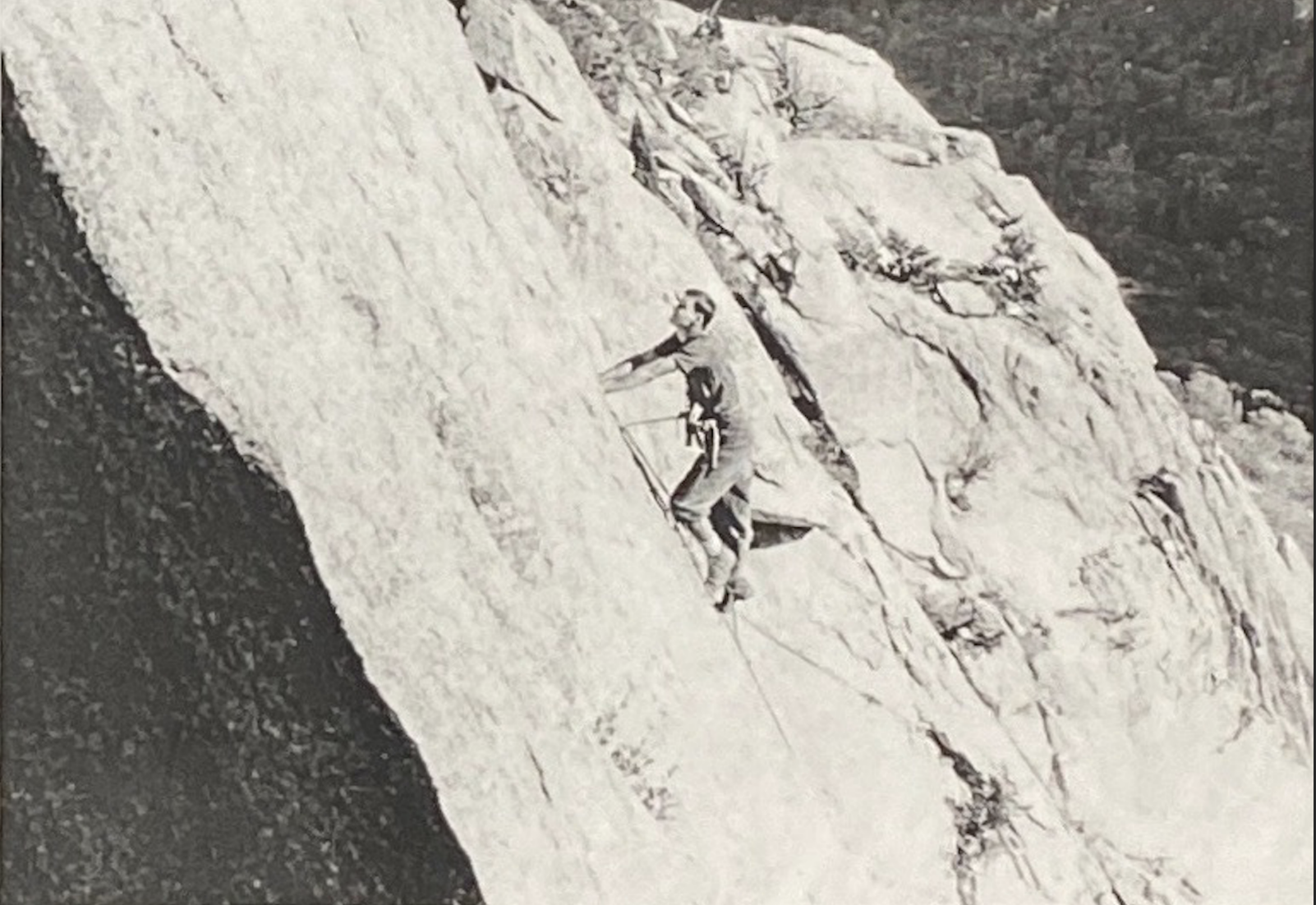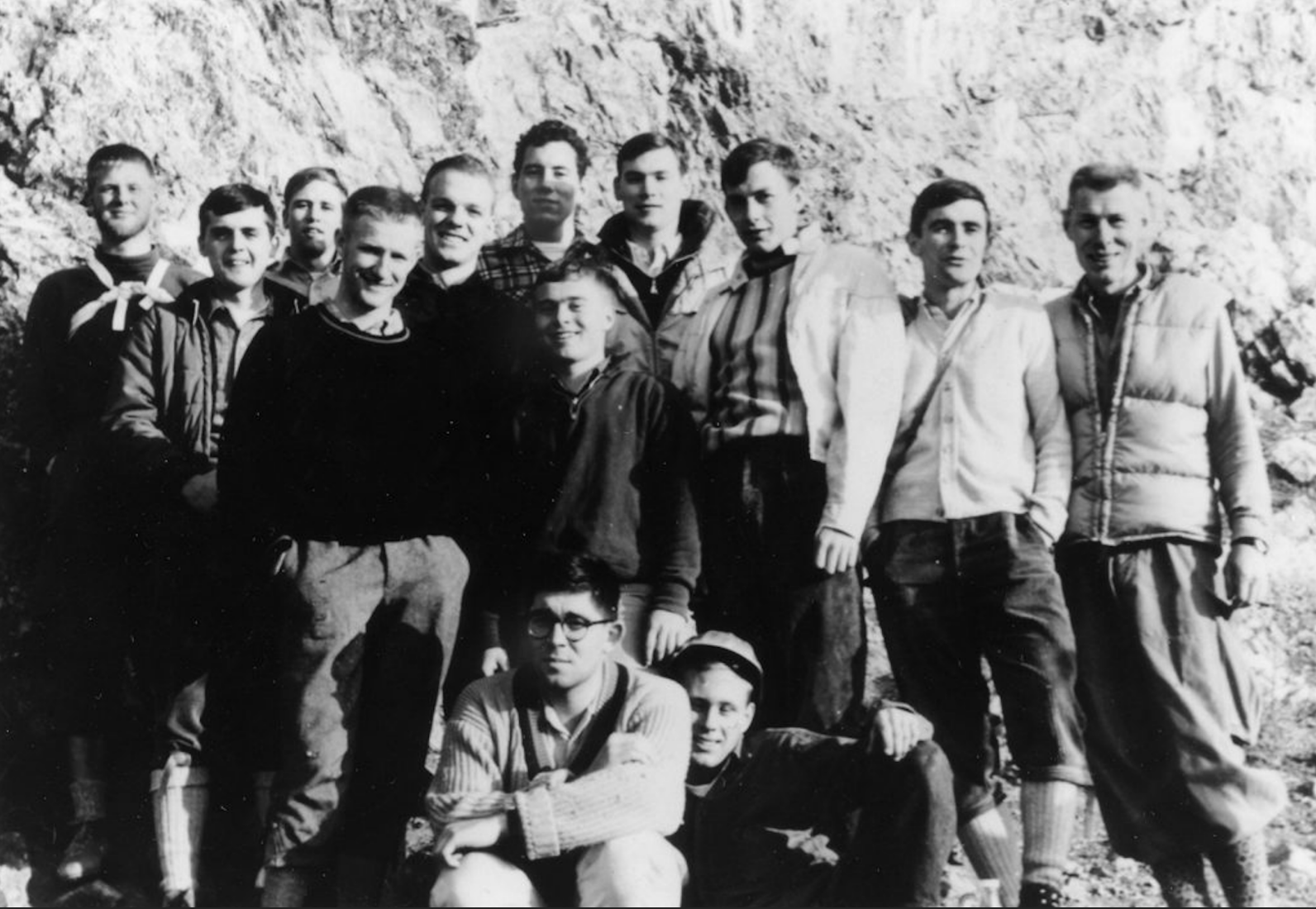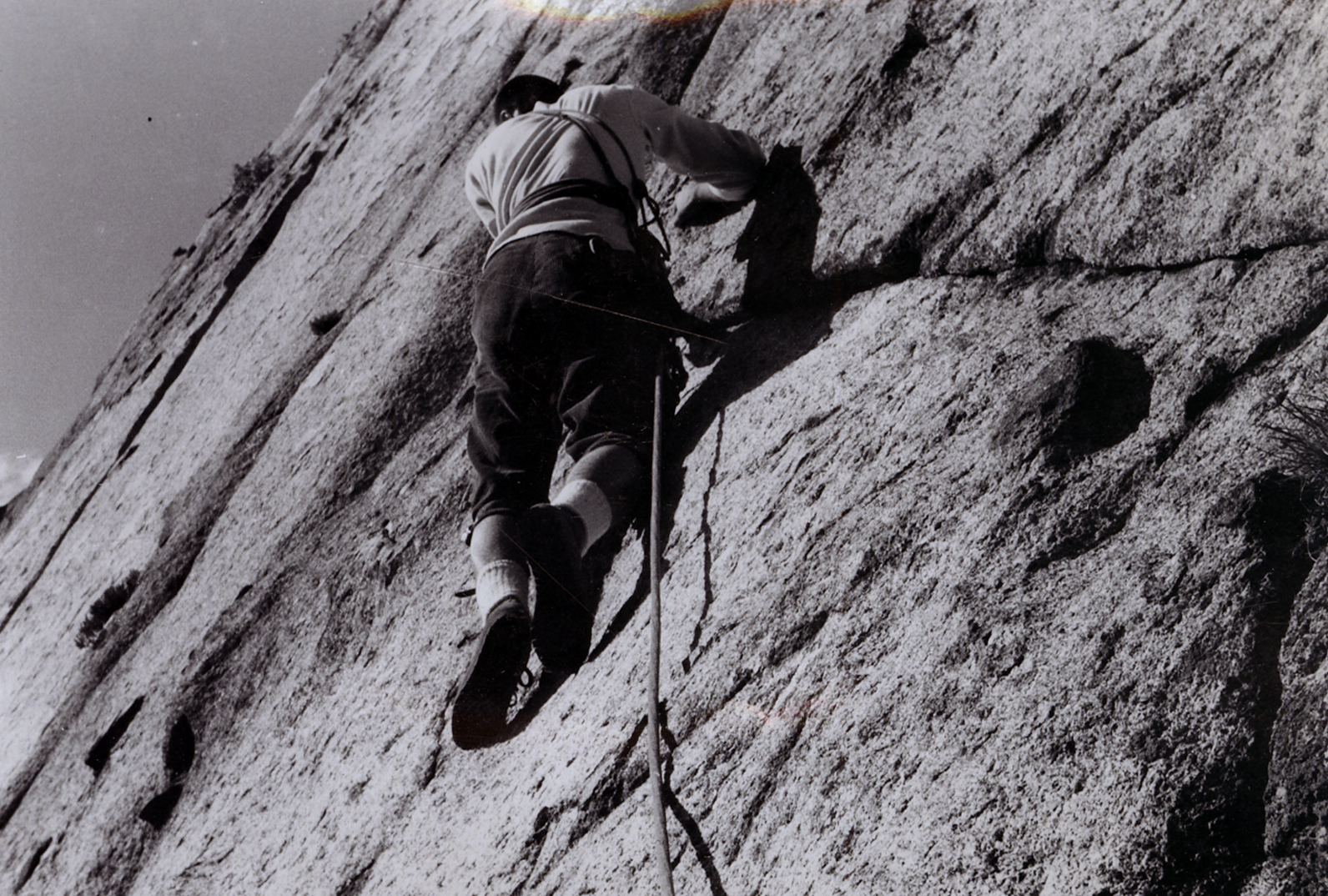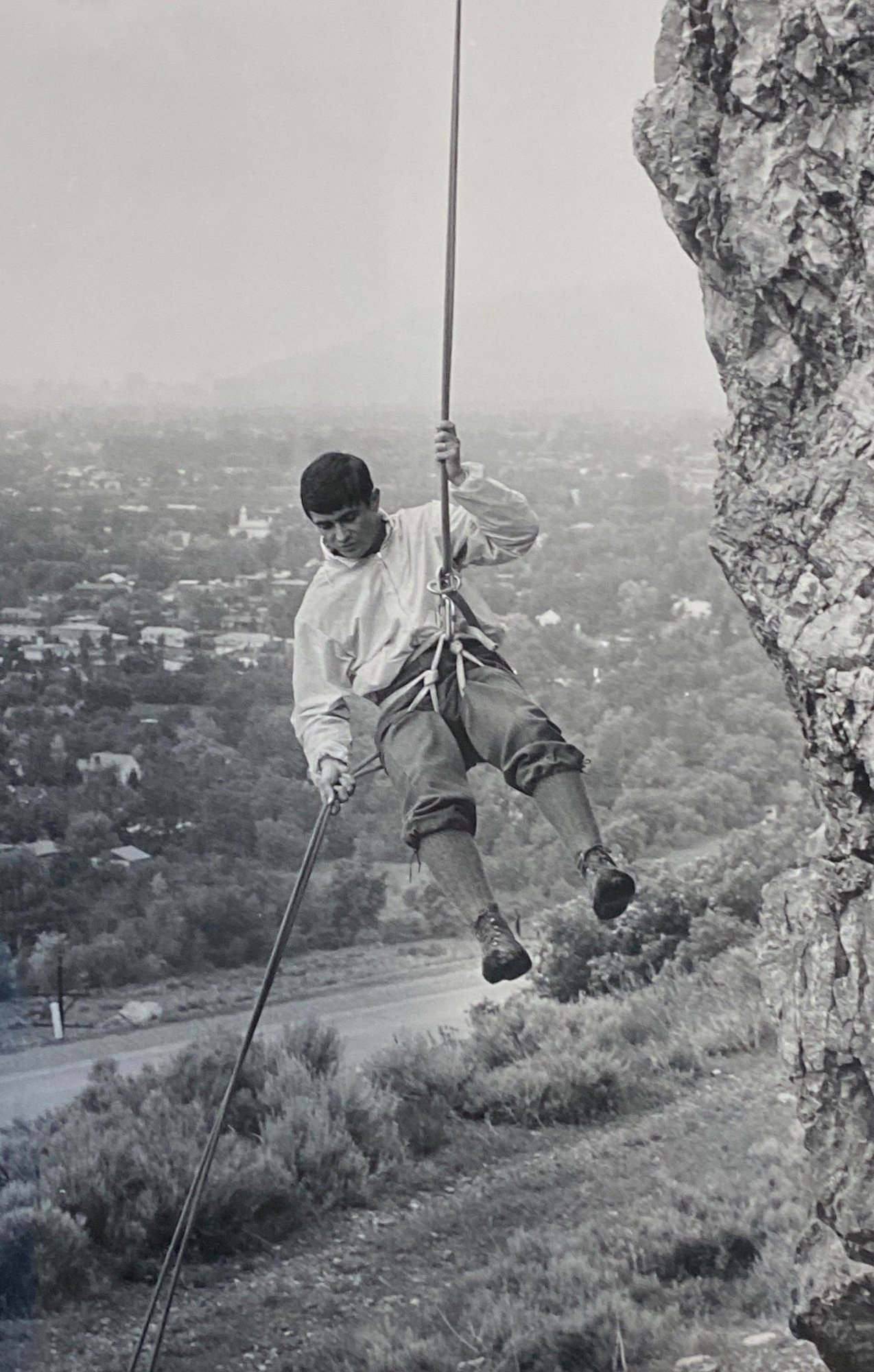Preserving Utah’s Climbing Legacy: Little Cottonwood Canyon Climbing Area Receives Historical Nomination
Fred Beckey (left) breakfasts with Alpenbock Climbing Club members (left to right) Rich Ream, Ted Wilson, Court Richards, and Dan Davis at Lone Peak. Credit: Richard F. Ream papers, 1962-1973, J. Willard Marriott Library, Special Collections Department, University of Utah.
Little Cottonwood Canyon Climbing Area Receives Historical Nomination
Preserving Utah’s Climbing Legacy
May 2, 2023
The Salt Lake Climbers Alliance (SLCA) has worked this past year to preserve Utah’s climbing legacy by nominating the Alpenbock Loop Climbing Area in lower Little Cottonwood Canyon for the National Register of Historic Places (NRHP). This would be the first recreational climbing area to be listed in the nation! Once it's listed, it will also be posted in the National Register database and in the Library of Congress, both digitally available.
A special thanks to the SLCA’s policy committee members, especially John Flynn - Assistant Director of the American West Center, for embarking on this endeavor. We could not have completed this process without the expertise and passion of Kirk Huffaker Preservation Strategies. We are excited to announce that John and Kirk will be presenting the historic nomination at this summer's Utah Preservation Conference on June 9 in Salt Lake City! Stay tuned for a public gathering to commemorate this designation this fall. You can read the nomination by accessing the publicly available draft here.
About the LCC Climbing Area Historic District
The National Register of Historic Places (NRHP) is the United States federal government's official list of districts, sites, buildings, structures, and objects deemed worthy of preservation for their historical significance or "great artistic value." The NRHP is a program of the National Park Service and is locally administered by the Utah State Historic Preservation Office. While the NRHP encourages preservation through associated incentives and policies, it is an honorary designation and does not restrict the property rights of owners.
The Little Cottonwood Canyon Climbing Area Historic District holds statewide significance as an excellent representation of a culturally significant district in the areas of Recreation and Social History in Salt Lake County, Utah.
Ted Wilson making first attempt on The Coffin, 1962. Credit: Rick Reese Collection, Special Collections, J. Willard Marriott Library, University of Utah.
Significance is on a statewide level due to the intensity of climbing development as a recreational sport within the district in a relatively short frame of time, and that that development was responsible primarily by one group – the Alpenbock Climbing Club.
Alpenbock Climbing Club in 1961-1962. Credit: Rick Reese Papers, J. Willard Marriott Library, Special Collections Department, University of Utah.
While non-technical climbing was happening on occasion by individuals elsewhere in the state before and during the period of significance, it was not well-informed by national trends for technique, safety, and equipment as it was by the Alpenbock Climbing Club during their time pioneering routes in the district and serving as the county’s first mountain search and rescue unit. The period of significance is 1962-1974, which encompasses the time period when Alpenbock Climbing Club members Ted Wilson and Larry Love established the first recorded climbing route in the district through to the time when route and technical climbing knowledge was passed person-to-person rather than through guidebooks, and capturing the rise of the Leave No Trace movement in climbing, embraced and promoted by the Alpenbock Climbing Club, and winter/ice climbing led by George Lowe.
Larry Love leading the first pitch of the Sail Face. Credit: Rick Reese Papers, J. Willard Marriott Library, Special Collections Department, University of Utah. Photographer: Ted Wilson.
In the Area of Recreation, the district is significant for its contributions to the pattern of early rock climbing and development of “classic” climbing routes, pioneering of hard-rock climbing technology and building local enthusiasm for climbing as an outdoors activity. The distinctive granite formations within the historic district remain unchanged since 1962 and share an interrelationship within a relatively small geographic area.
In the Area of Social History, the district is significant for its association with the local Alpenbock Climbing Club and with individuals whose activities were critical in building the Utah climbing community and connecting with the national climbing community through recognized figures such as Yvon Chouinard, Royal Robbins, Fred Beckey, and Layton Kor. These national figures helped give legitimacy to climbing in this area of Little Cottonwood Canyon, the Alpenbock Climbing Club as an entity, and helped spread international climbing culture. Notable locals were highly proficient, internationally-experienced climbers, working search and rescue locally and in the Grand Tetons throughout the 1960s.
The Salt Lake Climbers Alliance is a 501(c)(3) non-profit that has been in existence since 2002. Our mission is to engage as an advocate to protect outdoor climbing access and as a steward to maintain sustainable climbing resources in the Wasatch and surrounding regions.
Ted Wilson rappels from Pete’s Rock, ca. 1960. Credit: Ted Wilson Photograph Collection, Special Collections, J. Willard Marriott Library, University of Utah.

